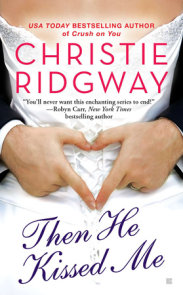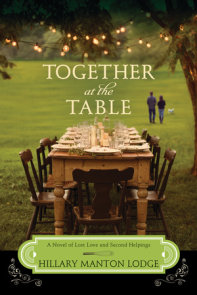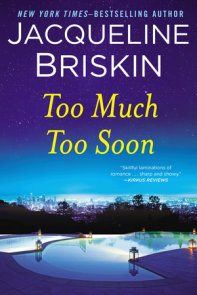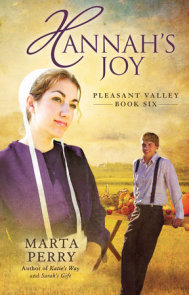READERS GUIDE
Questions and Topics for Discussion
INTRODUCTION
San Andreas, California is a tiny crabbing port on the Redwood Coast, an hour south of Oregon. Though the country around it is spectacular, the town itself is unremarkable, except for its wonderfully quirky citizens. Ex-Hollywood lawyer Linc Ellis moved here to help his wife open a posh B and B; but when she died very suddenly, she left him to mourn in a mansion full of empty rooms. Painter Tassy Morgan got only a shack above the beach when her ex-husband discarded her. Linc and Tassy live just across the road but between his numbed isolation and her fierce concentration on her art, they haven’t even met—yet.
But real estate hustler Margaret Nam wants to turn this modest town into a quaint seaside resort, and step one is dealing with Tassy’s disreputable shack. Her campaign brings Linc and Tassy together and to their mutual surprise, they strike sparks. The more local opposition Tassy faces, the closer she and Linc edge toward unexpected love.
Tassy Morgan’s Bluff is a book about falling in love, but on your own stubborn terms this time. It’s a story of self-actualization, despite the obstacles of life and the opinions of the community. Before they meet, both Linc and Tassy think their lives are in their last act. But the hopeful gift of their story is the discovery that maybe their real lives are just beginning. For any reader who yearns for renewal and a shot of much-needed wit, this story is the perfect remedy.
ABOUT JIM STINSON
Jim Stinson has had a peripatetic career writing, teaching, and producing videos. Today, he works pro bono on website and podcast media for progressive legislators and causes. He lives in Portland, Oregon, with his wife.
A CONVERSATION WITH JIM STINSON
Q. The town of San Andreas and its citizens are major characters in this book. What was the inspiration for this town? How do you go about building the setting for a book and what elements of a book’s setting do you feel are most important?
Purely imaginary San Andreas was synthesized from several different towns on the California Redwood Coast. (I try to be scrupulous about avoiding the least hint of references to real people and places.) Since readers grow impatient with self-indulgent description, I try to select just the most telling details and then introduce them at plausible points in the story. Here, I think the most important descriptive element is the environment—the brooding redwoods, the aching-green fields, the fickle weather, the stunning sunsets, the ancient, indifferent sea.
Q. This book features a large and distinct cast of characters. How do you approach constructing your characters? What elements of character do you feel are most important? How do you develop dialogue for your characters?
I start with a general idea, then individualize the person progressively as the needs of each scene suggest. Notice, for example, how, over the course of the narrative, Linc deals with the mega-kitchen in the B and B. I also characterize frominside by narrating each scene in the distinctive voice of one character in it (that’s why some of the prose shows some dodgy grammar!) The book includes the voices of eight quite different personalities—maybe more; I lose track. The author’s voice intrudes mainly to introduce a scene and to segue way into the next one. As for developing dialogue, I’m a good amateur mimic (my old radio background) so I just “do” the characters as I write. And re-write; and re-write…
Q. The book involves several interweaving storylines (Margaret Nam’s beautification crusade, Grandmother Halvorsen’s land grab, and the love story between Linc and Tassy). How do you go about developing multiple stories? What challenges did you face writing this book?
I have no idea how I interweave story lines. Often, a scene will feel out of place, so I fuss with scene order until I’m satisfied. I maintain a strict timeline, so that different events don’t get out of sync on my imaginary calendar. For me, Grandmother Halvorsen’s campaign is important as a key element in the local milieu and as a symbolic force (See her reaction, at the end, on the beach). The trick was to keep her story engaging although it doesn’t join the mainstream action until near the close of the book.
Q. Tassy Morgan is a strong female character. What drew you to writing about Tassy? What was the inspiration for the character? What message did you want to convey to your audience through Tassy?
People have asked how a male can write a story with a woman protagonist and a strong female sensibility overall. I have always been around strong women—my grandmother, mother, maternal aunt, sister, sister’s daughters, my wife, my own daughter—and I’ve always felt comfortable in their company. Beyond what I’ve naturally absorbed from my boisterous family, I’ve found that the trick is not to write “female” but to provide just the right cues to let the reader create the character’s female-ness, if you will. As for “message,” I simply tried to write a story about life as I’d like it to be: full of imperfect people and frustrating events, but funny despite itself and, in the end, worth it. I hope readers can share my values.
DISCUSSION QUESTIONS






















